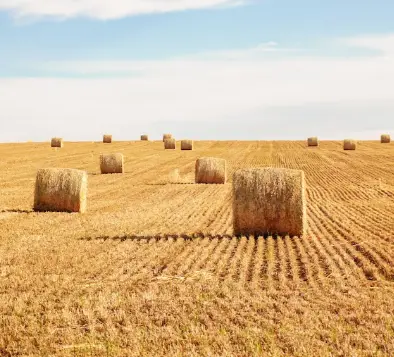Though nowadays most dogs are kept indoors, there are still some dogs that are kept in outdoor doghouses and kennels. Along with a safe, clean and waterproof environment, there should be adequate insulation and bedding in order to keep the dog warm and to keep their joints cushioned. Should you use straw for dogs?
Even the nicest dog houses can be chilly at times (especially in the winter), so there are a few more steps you should take to provide your pet the most comfortable housing. But is using straw for dogs the best way to keep them warm and comfortable?
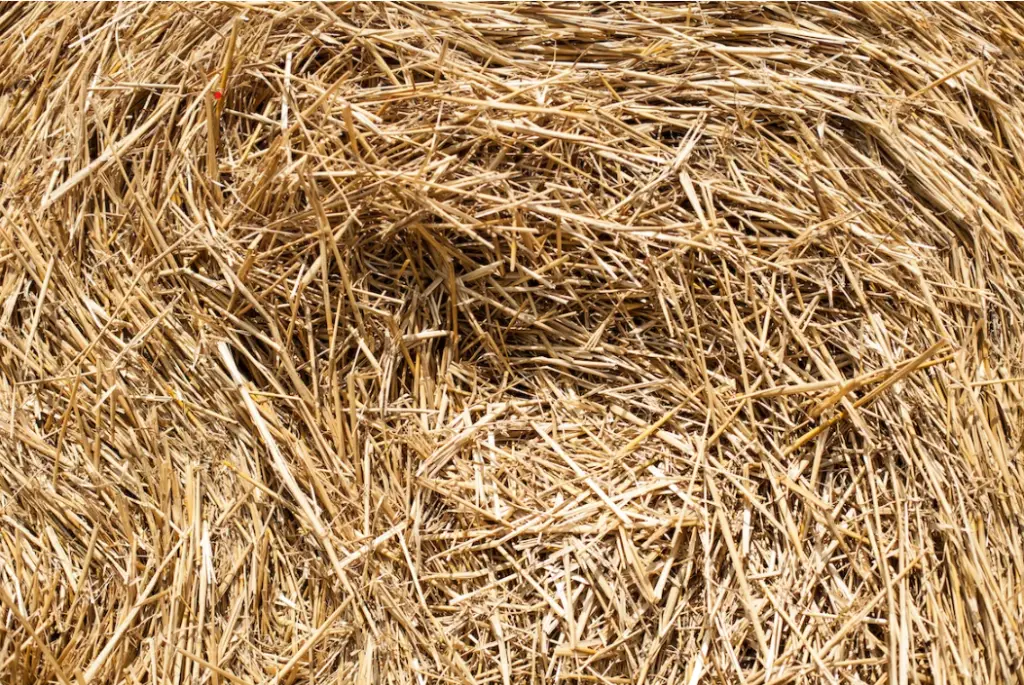
Should you use straw for dogs? Does a Dog House Need to Have Bedding?
In certain situations, bedding may not be strictly necessary since throughout history, many dogs have lived for years while sleeping on the ground. But, in this day and age, we understand that this is neither typical nor ideal and some bedding should be provided.
As dogs age, it is best to have a buffer between their joints and hard surfaces as well as an insulated layer to protect from inclement weather.
It’s also crucial to keep in mind that some states REQUIRE that property owners supply bedding for dog structures, so make sure to research the rules and legislation in your area.
Should you use straw for dogs? Let’s look at some alternatives before we answer that question.
Selecting Quality Bedding for Your Dog House
Over the years, various materials have been utilized as dog bedding, but some have shown to be more effective than others but is straw for dogs one of them? Some of the tried-and-true resources include:
Bed and Bath Linens
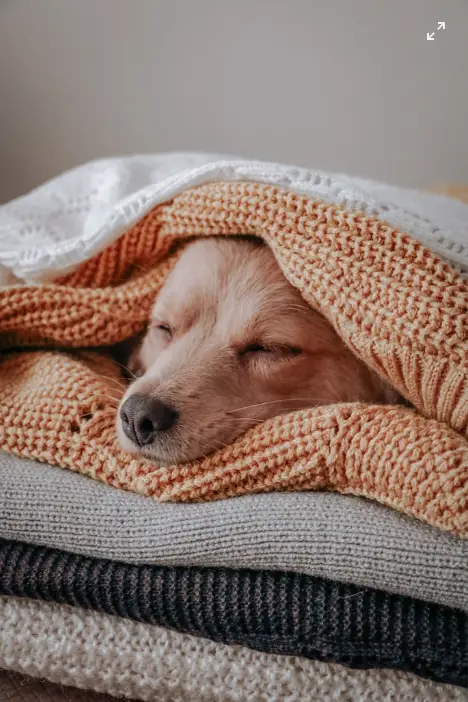
Your dog can have a basic and functional bed made out of a decent blanket, sheet, or towel. In addition to providing a buffer between your dog and the hard surface of a dog house, kennel floor or on the ground inside a dog house, linens don’t make as much of a mess as wood chips. Also, they are easy to remove and replace for cleaning.
Used blankets that are too worn out for decorative purposes but are still too good throw away are ideal. It gives them a second purpose and saves from the landfill for just a while longer.
Old pillows, blankets and comforters provide cushioning and bed linens can add a layer of protection on top of the cushioning to keep them cleaner longer. Sheets, towels and pillow cases can provide a top layer and will be less bulky to clean and can be washed more often. To keep the blankets as fresh as possible and to help prevent odors from accumulating, they can be washed as often as necessary with mild detergent.
Remember that any bedding, including blankets, can act as hiding places for spiders, snakes, and other creepy crawlies therefore, it is advisable to remove it and gently shake it once or twice a week to prevent these types of issues.
Additionally, check the comforter frequently to make sure your dog hasn’t torn the seams apart or gnawed through the fabric. Dogs who ingest the filler substance, even unintentionally, may experience health issues.
- How to Keep Your House from Smelling like Dog
- A Review of the Top 5 Best Brooms For Dog Hair
- A Review of the 4 Best Dog Shampoos for Itchy Skin
Rugs
Your dog might have a really comfortable bed made out of a soft rug. Rugs provide many of the same advantages as linens do, plus they frequently have a rubberized back that helps to keep them from sliding around and protects them from dampness. Rugs aren’t as suitable for severely cold weather because your dog can’t easily crumple them up like they can a blanket.
Choose a rug with a long/high fiber length (also known as pile) such as shag or California shag. If your dog isn’t an aggressive chewer as this will increase comfort and warmth. To prevent aggressive chewers from tearing the threads out, choose a rug with a lower or looped pile like Berber or one made for indoor/outdoor use.
You could just use a regular rug (like the kind you’d use inside your bathroom or in front of your entrance), but an indoor-outdoor rug that is made to withstand the elements will last longer.
If you are using a larger rug, and your dog has had an accident, there are several solutions for cleaning that will help with eliminating the odor.
Dog beds
A dog bed is one of the more expensive solutions, but it is also far and away the best option for keeping your dog warm and happy. Though, keep in mind, the bigger they are, the more difficult they are to wash in a standard household washing machine.
Our website is supported by our users. We sometimes earn money when you click an affiliate link and make a purchase. This is at no extra cost to you and helps us to create quality content. Thank you for your support.
Your dog will appreciate the support offered by a sturdy orthopedic mattress (we suggest the Furhaven Orthopedic, Cooling Gel and Memory Foam Dog Bed) or the warmth offered by the K&H PET PRODUCTS Heated Thermo-Snuggly Sleeper Indoor Pet Bed, which is available in electric or self-warming models.
Though there are many good bed options at all price points, there aren’t many made expressly for use outside use if they are exposed to high heat, extreme cold or wet weather conditions. However, they fare fairly well in kennels and dog houses since they are usually protected by walls and a roof.
Of course, they won’t last as long as they would indoors and will have to be washed more frequently.
- Ultimate Guide: How To Take Care Of A Puppy
- Ultimate Guide: How To Take Care Of A Dog
- Ultimate Guide: How To Take Care Of A Senior Dog
- The Benefits of Owning a Dog
- Top 12 Tips for First Time Dog Owne
Wood chips
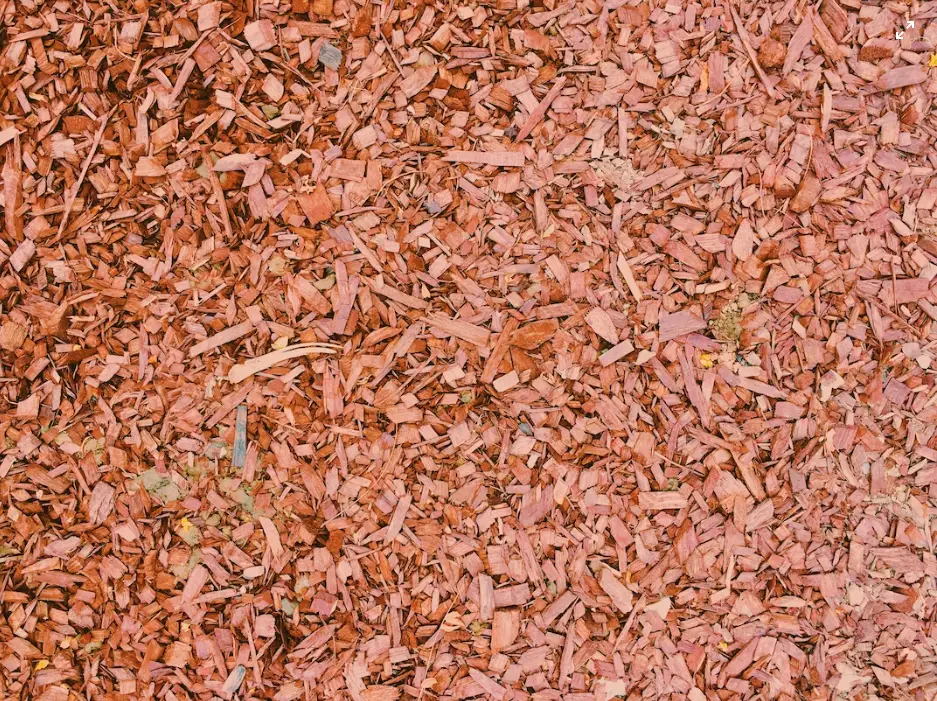
Another bedding choice is wood chips, particularly those made of cedar or pine. Cedar chips are great for dog beds because they naturally repel fleas, ticks, and other insects. Furthermore, they offer your dog excellent insulation and comfort.
Pine and cedar chips provide a pleasant aroma as well. However, the same thing that makes them smell nice, the volatile compounds (aromatic hydrocarbons, phenols, plicatic acid and oils) can post a potential health risk to your dog.
These health risks, though rare, include: respiratory problems like asthma and allergic responses, skin irritation (contact dermatitis) and can even cause changes in the liver. Therefore, make sure to watch out for sneezing, itchy nose, wheezing, labored breathing, red and/or itchy skin, etc. And make sure to get your dog’s liver enzymes at regular yearly check-ups at your vet to make sure there are no drastic changes when using wood chips.
Because of these risks, it is recommended not to use shavings with dogs that are elderly and/or sick.
Also, wood shavings should never be used with females who are pregnant or nursing, as wood shavings can contain bacteria that can cause serious illness in super young puppies. Though you see this used as bedding in nearly every pet store.
Now after all of that doom and gloom, on the upside, wood chips are also somewhat eco-friendly because they can be composed if they are dog feces free.
Choosing the Wrong Bedding for Your Dog’s Home
Over time, humans have found some excellent beddings, but they’ve also found those that don’t work well. Among the worst possible options are:
Sawdust
Fortunately, sawdust isn’t a very common bedding for dogs. Though it has wonderful cushioning and insulative properties, it’s tiny particulate nature makes it extremely messy to deal with.
Although it is an inexpensive and abundant material, as it is a by-product of the woodworking industry, it is difficult to contain, sticks to nearly every slightly non-smooth surface and is difficult to remove.
Simply put, sawdust is too fine to be utilized as bedding and can get into your dog’s eyes, nose and other crevices, causing irritation. If it gets into your dog’s lungs, it can become a serious health issue.
It’s messy, inconvenient and best put in your garden compost.
A Not So Terrible, But Not So Bad, Option: Newspaper
Newspaper can pass for bedding in an emergency. It’s abundant, absorbent, disposable, easy to switch out when it gets soiled and fairly safe to use. Sounds great right?
The downside is that it isn’t durable and once wet, can tear easily, making the mess worse. Therefore, making it a terrible bedding for an outdoor dog dwelling.
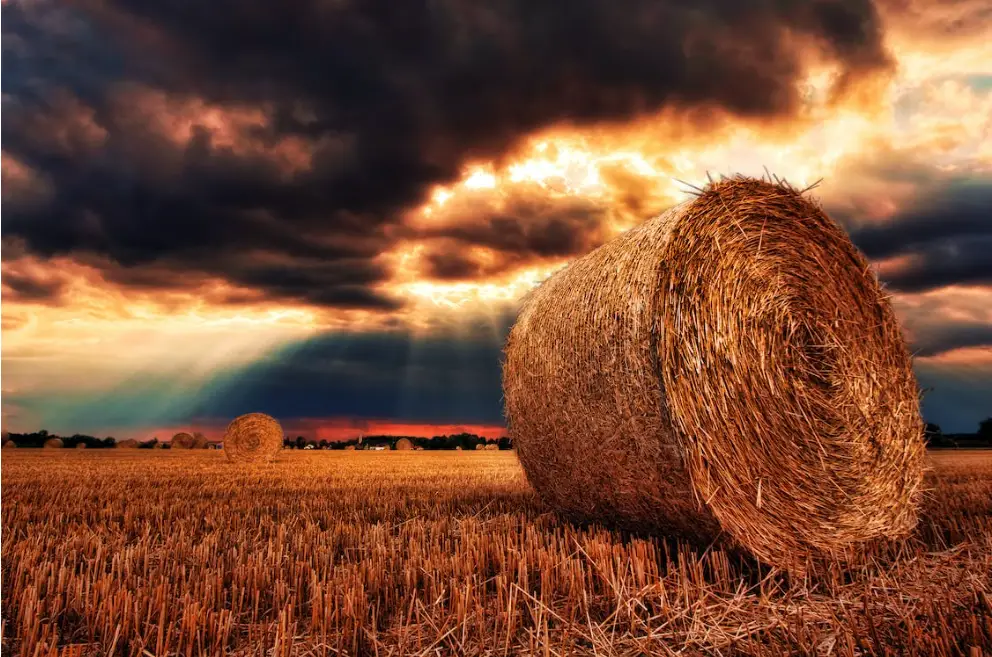
Straw and Hay
Is it good to use straw for dogs?
Now you have the answer for whether it is good to use straw for dogs. No. It is not. And here is why:
Fleas, as well as other insects like the mites that cause sarcoptic mange, frequently make excellent use of hay and straw as habitat.
According to Ernest Ward, DVM; Updated by Amy Panning, DVM of vcahospitals.com:
“Sarcoptic mange is caused by a parasitic mite (Sarcoptes scabiei) that burrows just beneath the surface of the skin. It is important not to confuse sarcoptic mange with demodectic mange, which is caused by a different parasitic mite.
These mites bury into the skin of healthy adult dogs and puppies, and feed on material in and on the skin. Sarcoptic mange is also known as scabies and is zoonotic, which means it is a disease transmissible from pets to people.”
Furthermore, hay can rot, mold and carrying fungus. And although straw breaks down slower, when it gets wet repeatedly and dries, it can also mold and can carry funguses. The spores from these can irritate dogs with allergies and other respiratory issues.
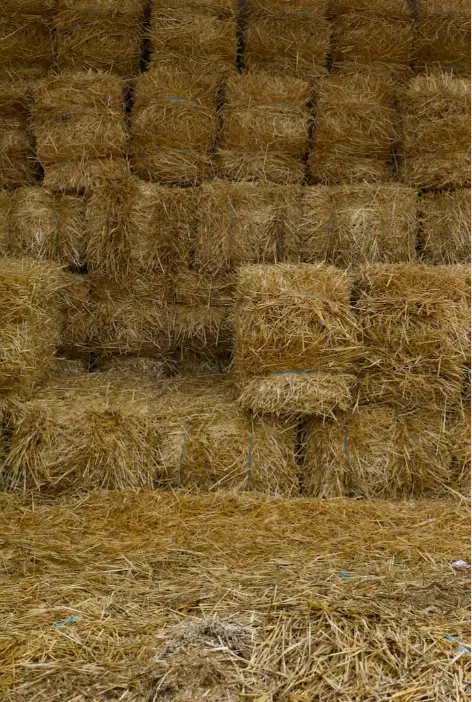
The Bottom Line: Should you use straw for dogs?
Straw for dogs can act as a bedding in an outdoor dog kennel, keeping your dog cozy and warm. Though it is typically safe for dogs it is not ideal as straw needs to be changed frequently because it tends to degrade extremely rapidly. If you choose to us straw for dogs both straw (and/or hay) should come from reputable farms to prevent your dog from coming into contact with polluted agricultural by-products, which can result in serious infectious diseases. Wood chips and shavings from cedar or pine are other alternative choices for dog house bedding. But ideally, soft, washable blankets, pillows and sheets are a better and cleaner choice for your dog.
Please read our Legal Disclaimer.

